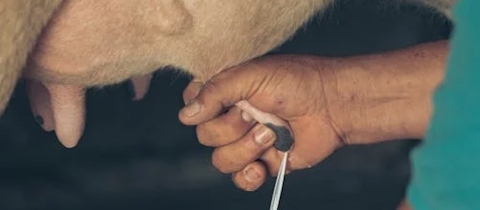It is a very small molehill. But to the folks at the Campaign for Safe Cosmetics (CSC) it seems more like Mount Everest. This organization’s recently released report features a cute baby smothered in lather, sitting in a bathtub under the headline “Baby’s Tub Is Still Toxic.” What is this all about? Acrylic monomers leaching out of the tub? Lead in the water? Chemicals out gassing from the shower curtain? Reactions to mould on the grout? Nope. The warning is about the trace amounts of formaldehyde or formaldehyde-releasing compounds added to some baby shampoos to prevent bacterial contamination. Reading this report may send any mother who has used a baby shampoo preserved with formaldehyde into a state of panic, fearing they may have doomed their offspring by exposing them to a “known carcinogen.” Well, let’s throw in a little science before we throw out the baby shampoo.
Yes, formaldehyde is a likely carcinogen. But that categorization was made on the basis of inhaling the chemical in significant amounts under occupational exposure. Embalmers and pathologists have indeed experienced a slight increase in cancer rates attributed to formaldehyde, mostly of the nasal cavity. However, data indicate that no tumours have been found when occupational exposure was below 2.4 mg of formaldehyde per cubic meter of air. Now let’s crunch a few numbers. A shampoo preserved with a formaldehyde-releasing agent such as “quaternium-15” has a formaldehyde yielding potential of 0.4 mg per gram. And let’s say that about 10 grams of shampoo, a rather generous amount, are used to wash baby’s hair. So we have the possibility of releasing 4 mg of formaldehyde into the air. But wait! Formaldehyde is very soluble in water, so very little will evaporate. But let’s really play it safe and assume that half, or 2 mg, will evaporate. Now, assuming that the volume of air in a bathroom is about 10 cubic meters, and that there is zero ventilation, the concentration of formaldehyde will be 0.2 mg per cubic meter, or one tenth the amount that has never caused a tumour even with continuous exposure! Of course, here we are not talking about continuous exposure. Nobody bathes a baby for eight hours a day. Therefore any suggestion that formaldehyde in shampoo presents a cancer risk is unfounded. Actually, mommy’s breath may be a greater risk. Formaldehyde is a product of human metabolism and breath can contain concentrations of formaldehyde at 0.4 mg per cubic meter. Maybe the greatest benefit of fear mongering about formaldehyde in shampoo is to make mommy breathless.
While inhalation of formaldehyde from shampoo is a non-issue, problems due to skin exposure cannot be so readily dismissed. Formaldehyde is a known allergen and can trigger rashes and inflammation, but these effects are also dose dependent. Skin sensitization can occur when the concentration in a solution is above 0.2%. And how much is present in baby shampoo? If all the formaldehyde were instantly released from quaternium 15, the concentration in baby shampoo would be 0.04%. But quaternium-15 is a slow releaser, so the effective concentration is far less than that. There may be some babies that react to these remarkably small amounts, but far fewer than would react to the bacterial contaminants in a poorly preserved product. As can be seen, once appropriate calculations are made, the clamor to remove formaldehyde as a preservative from baby shampoos amounts to no more than unscientific noise. But as far as marketing goes, the public is right even when it is wrong, and manufacturers are working towards using alternate preservatives such as benzyl alcohol, potassium sorbate, sodium benzoate or methylisothiazolinone. Of course one can dredge the scientific literature and come up with risks for these as well. Dig deep enough and at some dose you can find some sort of risk with any chemical. Furthermore, if we want to eliminate all risks from formaldehyde, we’ll have to get rid of particleboard, permanent-press fabrics, varnishes, paints, carpeting, curtains, nail polish as well as many types of insulation and paper products, all of which are manufactured with formaldehyde and can out gas the compound. In some cases, as with the notorious trailers that were supplied to victims of the Katarina disaster, out gassing can be enough to cause severe eye irritation and respiratory symptoms.
To curb formaldehyde exposure we would also have to forget about fireplaces, gas cookers, driving cars and of course, smoking. Even then we would be ingesting some formaldehyde because it occurs naturally in virtually all foods. When it comes to the use of products for the hair, there is one area where formaldehyde poses a real concern. Some of the “Brazilian” hair smoothing products contain sufficient formaldehyde to pose an occupational hazard to hair dressers. Here the chemical is not used as a preservative, it is one of the active ingredients needed to form links between protein molecules in hair. And unfortunately the presence of formaldehyde in these products can be hidden by using alternate names for the chemical on the label. Methylene glycol, methanal, oxomethane and formalin are some of these. Often these products declare themselves to be “formaldehyde-free.” You certainly wouldn’t want a baby lying all day in a hair dressing salon where such products are used to “smoothen” hair. But washing baby’s hair with baby shampoo, any kind of baby shampoo, is a completely different story. So let’s get formaldehyde out of Brazilian hair products but let’s not throw out the baby with the bath water. Trace amounts of formaldehyde in shampoos prevent bacterial contamination, a significant problem, at minimal risk. If you want to worry about a real risk in the tub, consider that about 150 children in North America, the majority under four years old, end up in emergency rooms mostly because of tub falls, many of which could be prevented with the use of a vinyl mat. Now that really matters! But I suspect that the folks behind the Campaign for Safe Cosmetics might then make an issue of the phthalate plasticizers that leach out of the mat.







